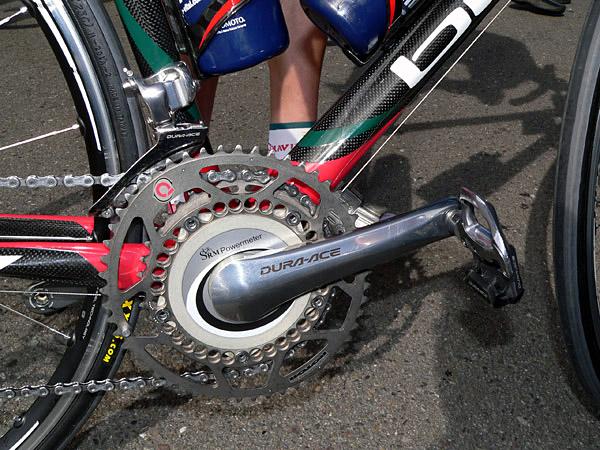 Looking into making a few bike changes over the fall months? Autumn is the perfect time to check up on your position on the bike since serious training is right around the corner and competition is far off, unless you’re heading up to ‘Cross Nats. Riders can ease into a new way of pedaling without a high training volume or threat of cramping in competition due to new neuromuscular firing patterns. Many of our bike fit customers are also looking into new gear for the next race season and want to make sure they get the right size bars, chainrings, frame, and cranks on their 2010 race gear.
Looking into making a few bike changes over the fall months? Autumn is the perfect time to check up on your position on the bike since serious training is right around the corner and competition is far off, unless you’re heading up to ‘Cross Nats. Riders can ease into a new way of pedaling without a high training volume or threat of cramping in competition due to new neuromuscular firing patterns. Many of our bike fit customers are also looking into new gear for the next race season and want to make sure they get the right size bars, chainrings, frame, and cranks on their 2010 race gear.
Whoa, right size chainrings and cranks? Yes, right size cranks. Using 3-D motion capture (For Durata, that’s Retul), we are able to determine if the cranks on your existing bike are the right size for your bike. Not all riders of a 32” inseam or 72.5cm saddle height need the same length crank. Determining factors in getting the right length crank include:
* Femur Length
* Tibia Length
* Foot Length
* Knee angle at top and bottom of pedal stroke
* Knee distance from foot
* Modality. Road, CX, MTB, TT, Track, or Tri athlete?
We’ve spent some time diving into how the Retul works and verifying it’s accuracy, but more importantly, verifying the outcomes of our own fit work. Derick’s project for his Masters at the University of Texas centered around getting cyclists in a position where their blood lactate levels at various workloads would drop with a certain range of knee angles, saddle set back, and reach. More on that in a later blog post!
Derick’s findings led us to change crank arm lengths on some of the subjects, but not on all of their bikes. Some bikes would be fine with 172.5mm cranks, while the same rider on another bike might be best off with 167.5mm cranks to have the lowest possible Bla accumulation at the tested workloads. In general, findings suggested with low back angles, short cranks perform well.
This is for several reasons, but the two easiest to explain are that it is easier to breathe and easier to push forward on the pedals. A major goal of the Durata Bike Fit is to have as many muscle groups as possible firing to push pedals, thus spreading the force required to load the pedals to as many muscle groups as possible. This allows a greater number of muscle fibers to share the load, thus reducing the rate at which the individual muscle fibers, and thus the muscle group fatigue. Derick found that these optimal changes to bike fit would result in lower blood lactate without increasing the amount of oxygen taken up by the rider. Not all riders are put together the same way, so riders that need a significant amount of saddle set back while riding in a low position also are heavy responders to changes in crank length.
Up next, if short cranks are right for you, are ovalized chainrings?
?




